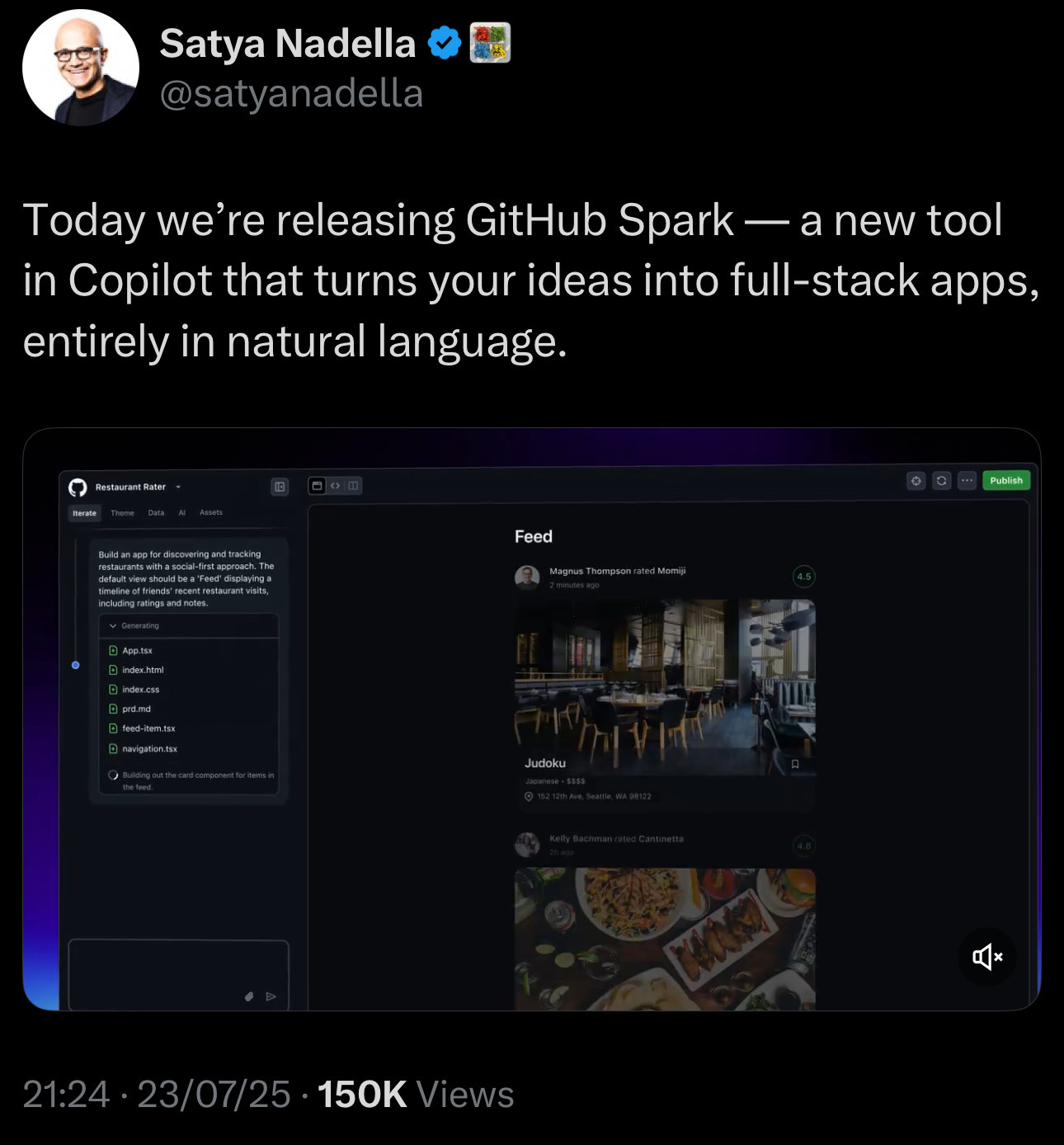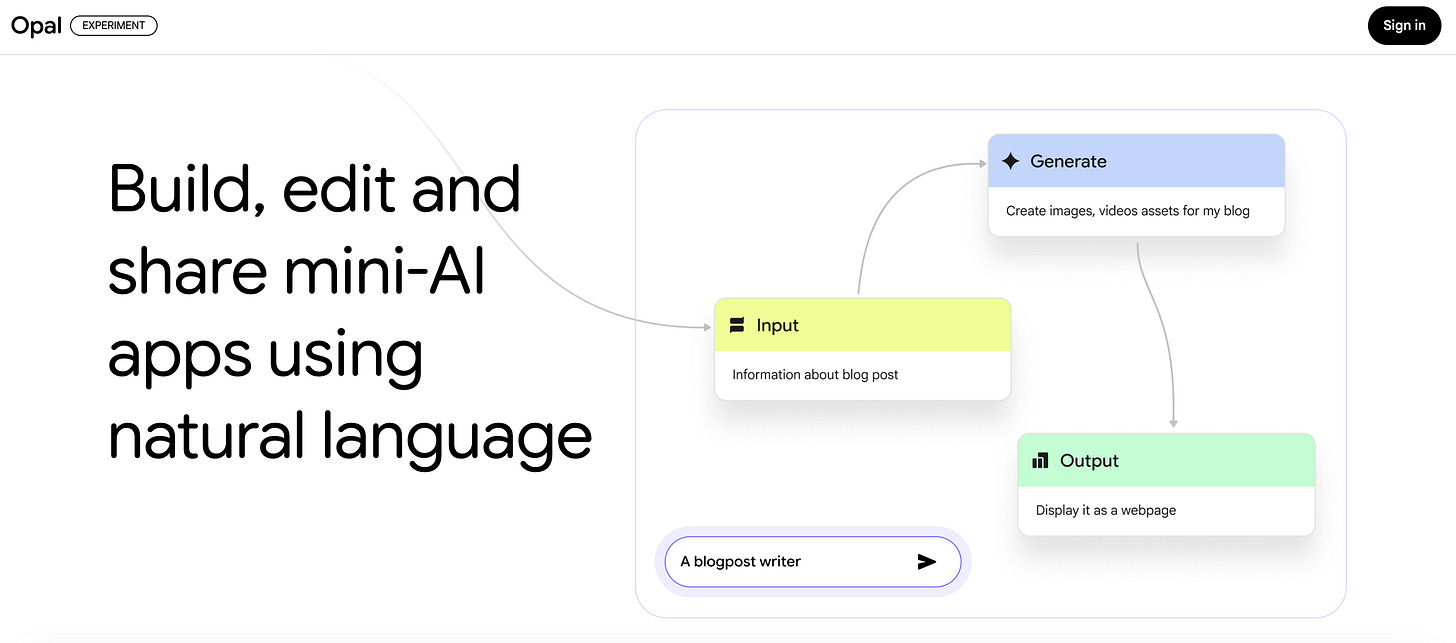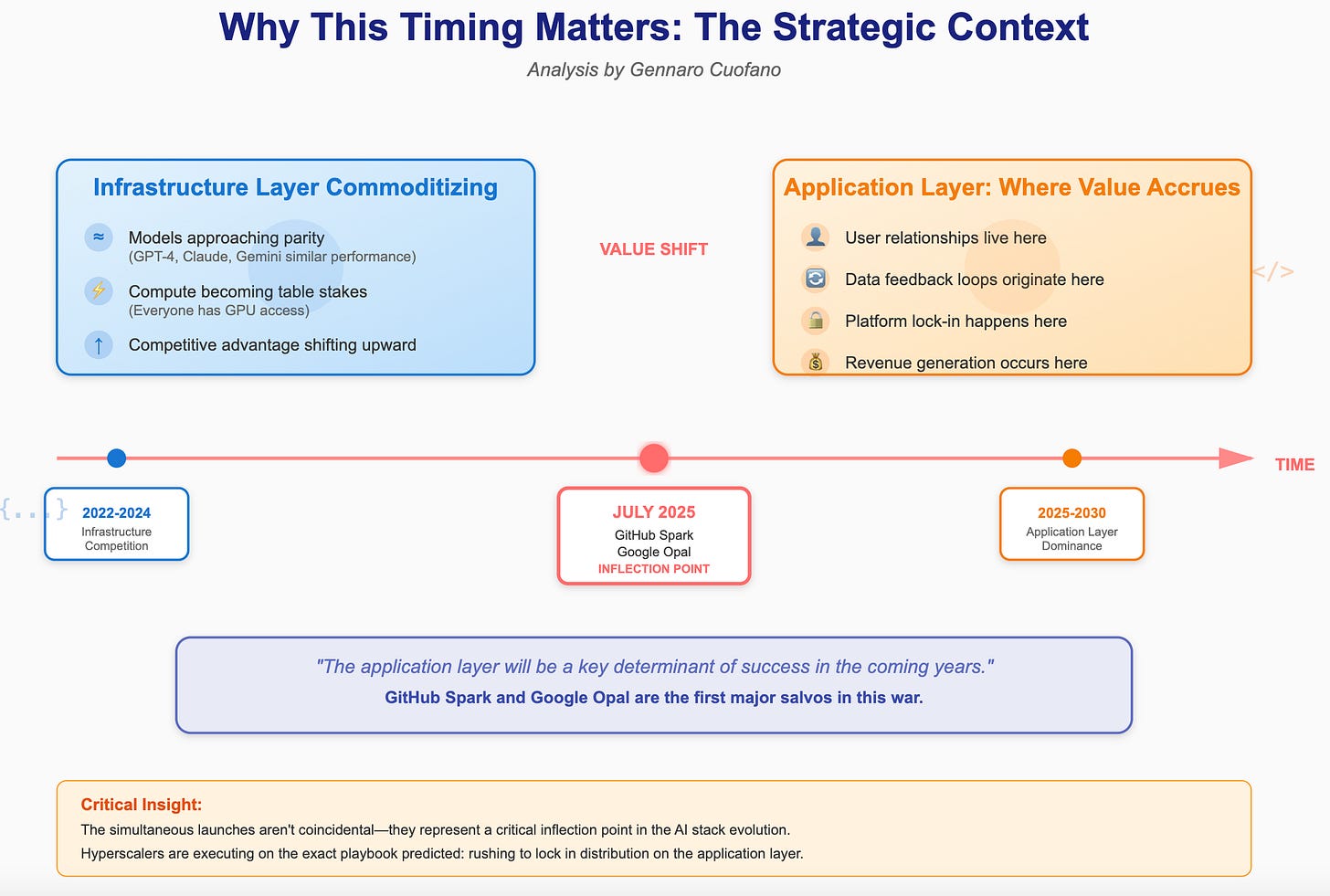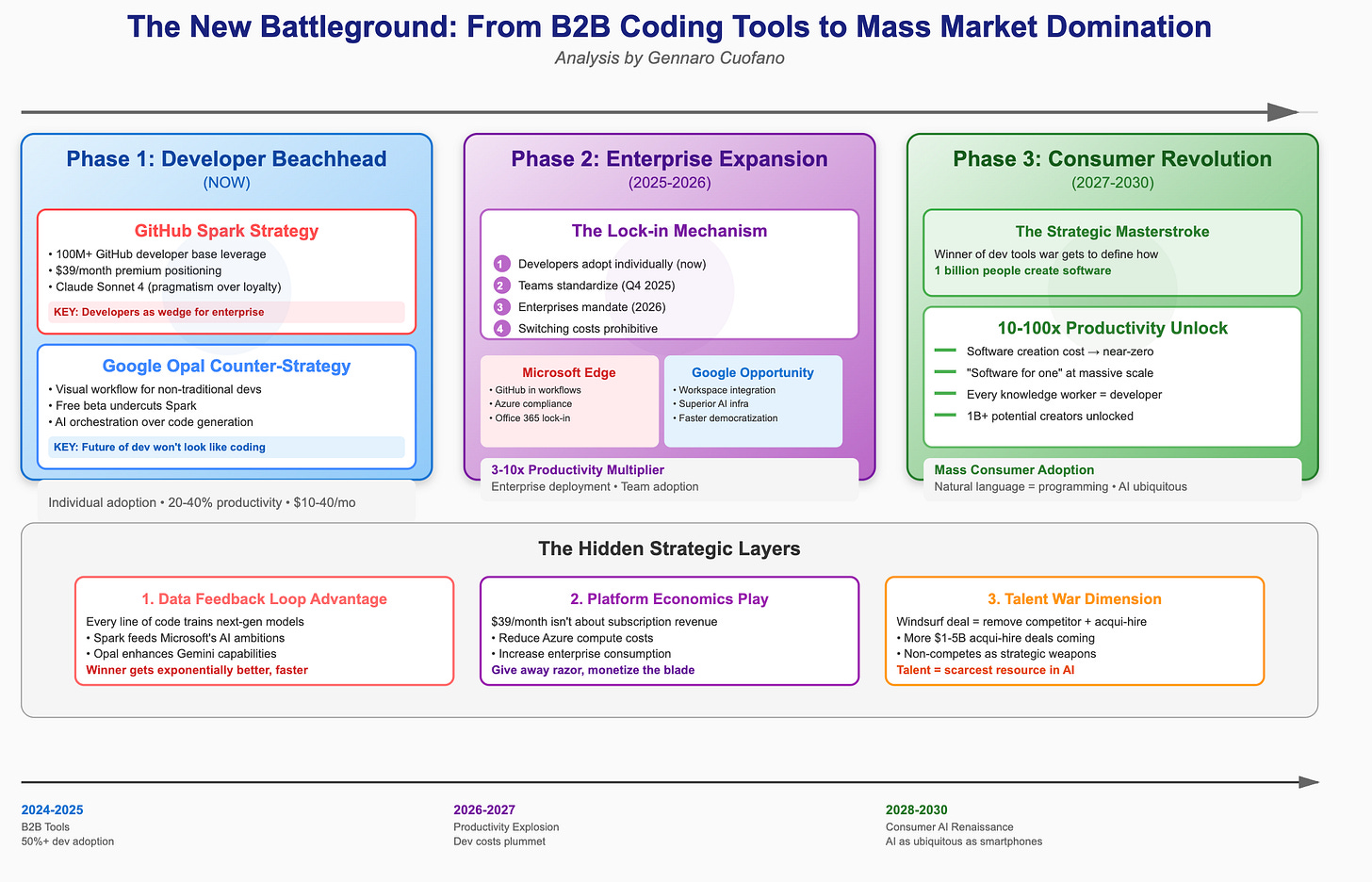The AI Vibe Coding Wars
Google and Microsoft just entered the “vibe coding race.”

Is this just a race after what’s buzzy at the moment? Or is there something more structural, critical for the long-term success of the AI race?
I argue the latter, let me explain…
Within a mere 48 hours this week, the AI landscape experienced a seismic shift.
GitHub Spark and Google Opal launched back-to-back, signaling that the battle for AI dominance has definitively moved from infrastructure to the application layer.
This isn't just another product launch cycle—it's the opening salvo in what will determine who controls the next decade of software creation.
Building on Gennaro Cuofano's analysis of the Windsurf acquisition drama, we're now witnessing the hyperscalers execute on the exact playbook he predicted: a rush toward locking in distribution on the enterprise, B2B, and consumer sides of the application layer.
Why This Timing Matters: The Strategic Context
The simultaneous launches of Spark and Opal aren't coincidental—they represent a critical inflection point in the AI stack evolution:
The Infrastructure Layer is Commoditizing
Models are approaching parity (GPT-4, Claude, Gemini, all within similar performance bands)
Compute is becoming table stakes (everyone has GPU access)
The competitive advantage is shifting upward in the stack
The Application Layer is Where Value Accrues
User relationships live here
Data feedback loops originate here
Platform lock-in happens here
Revenue generation occurs here
As Cuofano noted: "The application layer will be a key determinant of success in the coming years." GitHub Spark and Google Opal are the first major salvos in this war.





